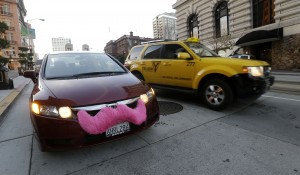A white paper released by the The National Association of Insurance Commissioners offers several suggestions for how state regulators should deal with insurance issues on coverage for ridesharing, which has turned into a nationwide controversy in recent months.
Ridesharing services offered by transportation network companies like Uber, Sidecar and Lyft present new insurance coverage challenges, and state insurance regulators are helping state legislators consider how best to address insurance coverage gaps associated with TNCs, as legislation regarding TNCs is pending in at least 35 states.
The NAIC paper, Transportation Network Company Insurance Principles for Legislators and Regulators, provides a guide for state and local policymakers when adopting laws or regulations regarding TNCs, according to its authors.
The paper discusses the perspectives of the insurance industry, TNCs, traditional livery services like cabs and limousines, regulators, drivers and passengers. It also recommends a range of potential state-based regulatory solutions. Issues including insurance coverage gaps, coverage amounts, and types of coverage are discussed, as well as the need for consumer outreach and education regarding these new transportation services.
 California Insurance Commissioner Dave Jones chairs the NAIC Sharing Economy Working Group, which developed the paper. Many of the suggestions in the paper are modeled after steps taken in California to deal with TNCs and insurance issues over the past two years.
California Insurance Commissioner Dave Jones chairs the NAIC Sharing Economy Working Group, which developed the paper. Many of the suggestions in the paper are modeled after steps taken in California to deal with TNCs and insurance issues over the past two years.
“States across the country are grappling with the issue of how best to make sure that TNC drivers, passengers, and the rest of the public are covered when there is an accident with a TNC driver,” Jones said in a statement. “Traditional personal auto insurance policies do not typically provide coverage, so there are insurance coverage gaps that states need to close. This is an area where insurance regulators and state legislators in each state can work together to make sure that consumers are protected.”
The paper notes that the ideal insurance solution is for ridesharing drivers to have coverage on a full time basis available for all ridesharing.
“To achieve that, the least complex approaches are that either the driver would purchase commercial coverage or the TNC would provide full coverage for all three TNC activity periods,” the paper states.
However, commercial auto insurance purchased by a driver seems unrealistic, considering it typically costs between $5,000 and $7,000 per year, according to the paper.
The paper seems to suggest that TNCs change their business model and agree to provide full commercial coverage for TNC drivers, or a more complex hybrid of coverage between the TNC and the personal auto policy will need to be created.
The paper does note that insurers are developing policy endorsements to cover ridesharing gaps.
“These hybrid insurance products, adding some level of coverage for TNC activities onto PAPs, are being developed as this paper is being written,” the paper states. “They are being introduced by innovative insurers willing to take on the calculated risk and be the first to gain market share in an evolving and growing space. Because the products are not being standardized but are being developed by different insurers, they will likely establish coverage via different methods for different time periods. The new products present many concerns for insurance regulators, including, but not limited to, the cost for the new hybrid coverage.”
Assuming more of these hybrid policies become readily available, the paper suggests that regulators and legislators that choose to do so may be able to require TNCs and TNC drivers to share the burden of insurance for TNC activities.
The paper uses California’s model of dividing the ridesharing process into three periods: Period 1 is when a smartphone app is on and when a driver is looking for a ride; Period 2 is when there’s a match and a driver is on the way to pick up a ride; and Period 3 is when a driver has a ride.
This suggestion to share the burden can be accomplished in a number of ways, according to the paper.
It suggests that regulators and legislators can require:
- TNC drivers to maintain coverage in Period 1 and TNCs to maintain coverage in Period 2 and Period 3.
- TNC drivers to maintain primary coverage up to a certain limit (for example, $100,000) while requiring
- TNCs to maintain excess coverage that pays for accidents resulting in damages above the primary limit.
- TNC drivers to maintain primary coverage in Period 1 up to a certain limit (for example, $100,000) while requiring TNCs to maintain excess coverage in Period 1 and primary coverage in Period 2 and Period 3.
Or, it suggests, states could adopt various combinations of the above.
NAIC is the U.S. standard-setting and regulatory support organization governed by the chief insurance regulators from the 50 states, the District of Columbia and five U.S. territories.
NAIC White Paper on Ridesharing
https://www.scribd.com/doc/260518200/NAIC-White-Paper-on-Ridesharing
Comments
Add Comment